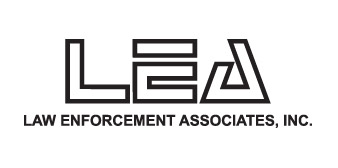This is part two of a three-part series.
Part Two: The Middle Years
The idiosyncrasies at Law Enforcement had just begun.
In August 2005, Mike Wagner took over as CFO. He and Feldman butted heads almost immediately, mostly because Feldman was still insistent on bringing the stun gun to market. Wagner said Feldman’s focus was almost obsessive, and he would even take trips to Russia to meet with development engineers. After Feldman approved several large purchase orders that some suspected involved under the table payments, Carrington became worried and met with Wagner.
When Feldman found out that information had been exchanged, he turned on Wagner and threatened to report him. The CFO’s refusal to bend the numbers further eroded their relationship.
“Unfortunately in accounting, there’s not a lot of gray area,” Wagner said. “It’s pretty black and white. Feldman knew I wasn’t going to bend in his direction on anything that was questionable. He knew I was going to fight him on it.”
Wagner said that Feldman claimed false revenue on a contract at least once more while he was CFO. In addition, Wagner spent much of his early tenure with the company adjusting numbers from 2004, when accountants failed to book more than $900,000 in liabilities. When he returned from a vacation in June 2006, Feldman asked him to resign. Wagner obliged, and a SEC filing was released claiming he’d stepped down for personal reasons.

John Carrington
But any problems with Feldman temporarily paled in comparison to John Carrington’s ordeal in mid-2005. On April 18, he issued a surprise statement that he was resigning from the company. He claimed it had nothing to do with company business, but stemmed from talks with his family and concerns about age and health (Carrington was 70 at the time).
In October, after a long investigation, Carrington was charged with illegally shipping more than $1 million in law enforcement products to China via Hong Kong and Italy. Federal law barred this kind of export to nations with recorded human rights abuses.
“I think the way they found out about it was a shipping person finally came clean and admitted Carrington knew that it was illegal,” said Wagner. “They were trying to route the shipment through another country to shield it from the export laws.”
Carrington pled guilty to the felony charges and was fined $850,000 and given a 5-year export suspension. But he wasn’t finished with the company.
*
On July 14, 2005, Law Enforcement was officially listed on the American Stock Exchange, and company representatives were given the honor of ringing the opening bell in August. On Nov. 7, 2008, after more than three years of missed filing deadlines, warnings from the SEC and AMEX, and poor financial results, the company voluntarily de-listed.
During that time, revenues and net income fluctuated. After reaching its peak, Law Enforcement’s stock price hit a low of $1.51 in 2005. In 2006, the stock fell beneath the $1 threshold, and continued its freefall, hitting a low of 12 cents.
A publicity disclosure from 2007 gives a clearer idea of company operations at that time. In a slideshow used to market their products, Law Enforcement revealed that they served 18,000 police departments, NATO, the United Nations, Democratic and Republican national conventions, the U.S. Open golf tournament, and the Summer Olympics.
In these documents and on their website, Law Enforcement is very open about the mechanisms and capabilities of their products. Mitchell called this transparency dangerous, citing his own practice of setting up a secure site on Advanced Covert Technology’s page.
In response, Perry contended that the information isn’t secret. “It’s just information about the company and the company’s products,” he said. But Mitchell wasn’t convinced.
“If you really start think about it, that’s crazy. It could get somebody killed,” Mitchell said. “It jeopardizes the safety of undercover officers, and it’s surprising LEA hasn’t gotten sued.”
Zoom in and scroll through the timeline to see the progress of LEA through the years.
In September 2007, Raymond James Financial Inc. filed with the SEC stating its intent to acquire a controlling interest in the company. The acquisition went through on January 15, 2008 when Raymond James bought the appropriate shares from Carrington and Sirchie.
An internal investigation conducted in late 2009 would indicate that Paul Feldman was “very bitter” about this transaction.
“He talked frequently about his anger toward Carrington and the three outside board members (General Lindsay, Senator Rand, and Jordan) whom he perceived as being close to Carrington,” the report stated—compiled by an outside attorney named Lisa Grafstein for Law Enforcement. Feldman reportedly felt betrayed and never spoke to Carrington again, despite their 20-year partnership.
A week after the acquisition became official, Feldman alerted federal investigators to export activities between Law Enforcement and Safe Source Inc., a company Carrington co-owned. The relationship between the companies was a violation of the terms of his conviction from 2005, and within a week both Safe Source and Sirchie were raided. Sirchie would later pay a $12.6 million fine for the error, and Carrington may still face criminal prosecution.
In March 2008, Feldman unexpectedly moved Law Enforcement from Youngsville to Raleigh, increasing tension between him and the board. Paul Briggs was named CFO in May, the first person to fill that position since Wagner left. And in November, the company was forced to defend their choice not to classify certain deferred tax assets (including the purchase from Wortley) as liabilities to the SEC.
The next year began more auspiciously, with a $5.7 million contract from the U.S. Census Bureau. Soon, though, it would become Law Enforcement’s worst year to date.
